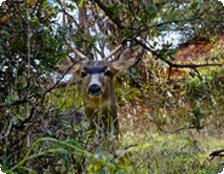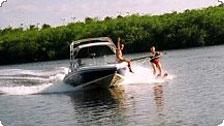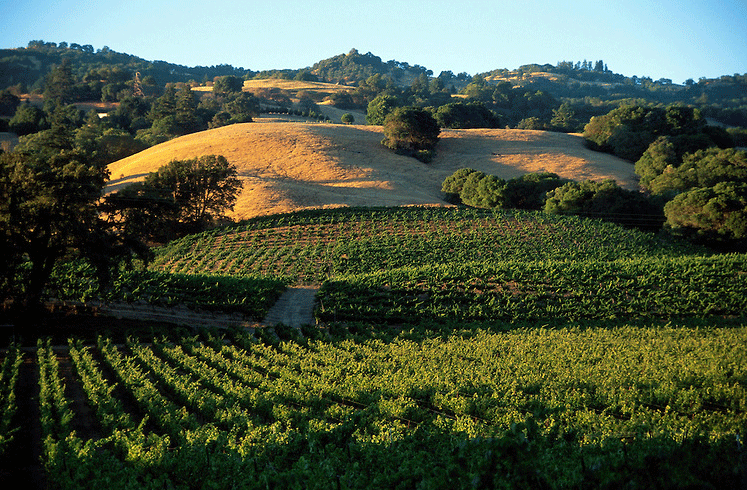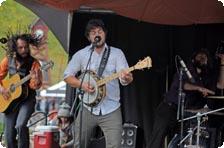by Alison McFarlane
I live and love the legend and lore of the American West. Cowboys thrill me, Indian culture captivates me, prehistoric life intrigues me. Craving hot hiking trails and blazing fiery sunsets, I journey deeply westward whenever the long weekend, spring break, summer escapade or winter doldrums hit.
Cedar City, Utah is home to the Tony-award-recognized Utah Shakespearean Festival. The festival is grand and the town is quaint, which is reason enough to venture to the pioneer outpost situated four hours south of Salt Lake City and two hours north of Las Vegas. However, as worthwhile as a few nights with the Bard was, my good fortune led me to a little known loop east of Cedar City. Following an ancient trail, the road ribbons through the dense red rock of Cedar Canyon, continues to the splendid Parowan Canyon and ends at the ancient and remarkable Parowan Gap.
Starting under a blue western sky, I climbed nearly 3,000 feet to the top of Cedar Canyon. High atop the mountain, puffy white clouds turned gray, the wind whipped up and a storm was a brewin’. The car’s outside temperature gauge had registered a perfect 78 degrees when I set out, dropped to 48 degrees. Encapsulated in the gray cloud, I postponed a planned hike. Perched on the monument’s edge peering into the canyon below, I was reminded of Silly Sand, a craft toy I had as a child that piled dot upon precarious dot of sand to see how high you could build a spire or a hoodoo (a natural column of sand or rock). The precipitous white, pink, red, vermilion rock of Cedar Breaks has all been spectacularly carved and shaped by wind and water.
With the scurry of the day’s storm, I had witnessed the unpredictably fierce power of wind and water. After the storm dumped a showerhead full of rain, it receded. As the sky cleared I came upon the striking legend that is “the American West.” Like the Marlboro Man in an off-road prairie, a cowboy was herding his flock of sheep under the unsettled sky. He sat high on his horse, hat firmly in place and swept from one side of the herd to the other. An earnest sheep dog performed his same task. I stopped the car to absorb the scene as the animals crossed the road in front of me. The dog herded, the sheep plodded, the cowboy tipped his hat, and the big,wide, wonderful West mosied along.
Next appeared the pop-up ski village of Brian Head. A rustic pizza joint, ski and rental shop, and general store make the resort a winter ski and summer mountain bike destination for Southern Utah, Las Vegas and California adventurers. At 9,600 ft, the mountain side is filled in with a surprising number of condominiums, lofts and cabins for overnight and multiple day vacations.
Continuing on the loop road was the hamlet called Parowan that may be famous for something other than Hamburger Patty’s — a lunch and dinner dive — but that was plenty of fame for me. Served up by a seasoned tattooed gal who left mainstream living decades ago, the joint was clean and cozy in that long, lost, small town way. With just the right amount of kitsch in the decor and cheese on the burger, I’d make the trip all over again just for this stop.
The canyon road descent ended on the floor of the sun-scorched desert. Squinting through the sun’s rays and engrossed in the ancient language – pictographs (painted) and petroglyphs (carved) of the early inhabitants – I had reached Parowan Gap. Cut by an ancient (now dry) river thousands of years ago, the gap was a passageway to the Red Hills.
The Parowan Gap petroglyphs, discovered in 1849 by the Parley Pratt expedition, are a dense gallery of cliff art including the “Zipper” — thought to be a numeric calendar. Unlike many petroglyph sites in Southern Utah that exhibit humans and animals, the Parowan glyphs are primarily geometric — believed to be used for measurement and calculation. Other carvings may be a legend of water pathways as the ancient peoples traveled through the gap for their seasonal harvest.
The Parowan Gap holds more treasure than rock art, though. It was here, after years of hiking Southern Utah, that I saw my first dinosaur track! And it was a doozy. Traveling with a former geology major from Southern Utah University, I was directed to a large boulder with an unmistakable and remarkable protrusion. I have always believed that dinosaurs roamed the earth, but this was literally first-hand proof. I imagined it to be a diplodocus, but someone more versed in ancient life on earth would have to confirm. The track was a gigantic hand or foot and extended beyond the location of a wrist or ankle bone. Perhaps it was unusually hot after the storm, maybe I was a wee bit dehydrated, or I might have been hallucinating from my hamburger patty, but standing at that site with the embedded track I could see dinosaurs roaming the earth. My car had disappeared, the storm and sheep rustler were distant memories, and I could see a family of plant eaters walking through the desert in search of the gap to make their way to the Red Hills of Southern Utah.
* * *
Alison McFarlane travels every day. Some days farther from home than others. She keeps a bag packed with three perfect black outfits at the ready for the next amazing adventure. Home is Salt Lake City, but mind and heart make her a citizen of the world. She reads, writes and dreams about globe-trotting experiences.











